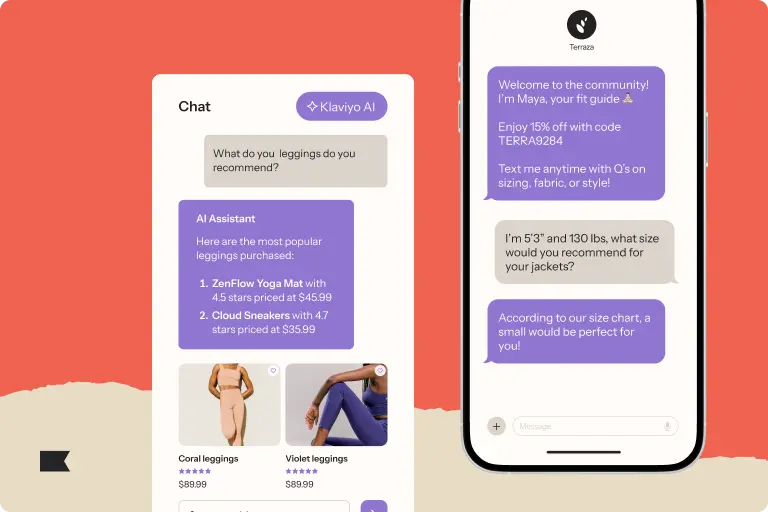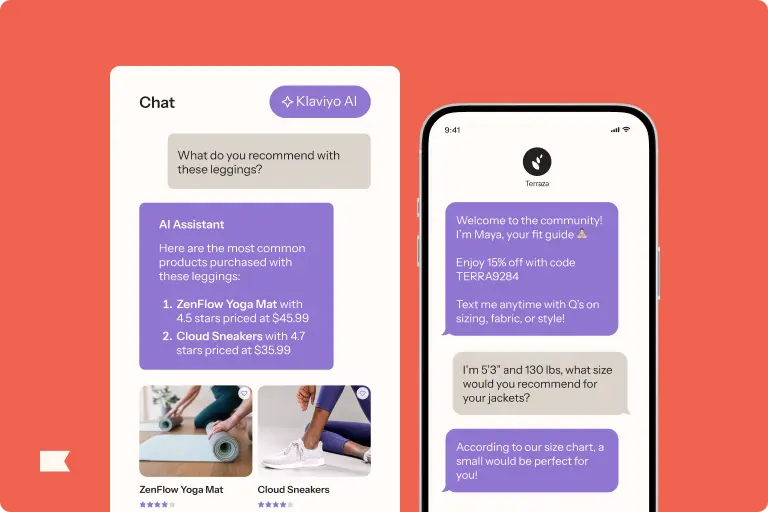Why KURU Footwear replaced their “build” mentality with a “buy” mentality—and how it drove their replatforming efforts

When KURU Footwear embarked on a complete replatforming of their ecommerce technology stack in fall 2022, they had one primary question in mind: What do we want to spend our time doing?
Since launching formally in 2008 on the heels of a business plan contest win 2 years prior, KURU has gained a cult following for its proprietary shoe technology, invented by founder and CEO Brett Rasmussen.
Rasmussen “did not set out to solve foot pain—he was just trying to build a better shoe,” says Sean McGinnis, president and integrator at KURU. But people suffering from plantar fasciitis and other types of foot pain took notice.
I don’t want to be an IT team. I want to be in the business of building incredible shoes that our customers love to buy from us.
Today, KURU has “a real, genuine job to do,” McGinnis says. “We actually help with foot pain. There’s a massive amount of people searching for solutions to the problems we help solve.”
As a DTC-only business that’s still growing, Preston Van Dyke, head of growth at KURU, says KURU’s primary focus is “creating connections with our customers.” In addition to Net Promoter Score (NPS) and their product reviews, they focus on 3 key metrics to help gauge how well they’re accomplishing that:
- Website conversion rate
- Average order value
- Customer lifetime value
At this stage, “anything that deters you from the business of focusing on those 3 metrics, in terms of customer acquisition and customer retention, is just going to delay your progress,” Van Dyke explains.
And that’s exactly the reasoning that led KURU to replatform from Magento Open-Source to what Van Dyke calls “a foundational ecommerce ecosystem with Shopify at the heart of it.”
“We analyzed our previous years’ experience and how much time and cost we had spent in building custom solutions and resolving bugs vs. optimizing towards intended outcomes, and we were spending far more in the former than in the latter,” Van Dyke says. “We wanted to flip that paradigm.”
“Anything that deters you from your core business, in terms of customer acquisition and customer retention, is just going to delay your progress.”
Anything that deters you from your core business, in terms of customer acquisition and customer retention, is just going to delay your progress.
It’s a “buy” over “build” mentality that McGinnis summarizes this way: “I don’t want to be an IT team. I want to be in the business of building incredible shoes that our customers love to buy from us.”
“All the time you spend worrying about code, whether the site’s down—all that stuff distracts you from your core purpose,” McGinnis adds.
KURU’s original mentality: build
When KURU upgraded from Magento 1 to Magento 2 in late 2017, the migration didn’t go well.
Largely due to miscommunication between KURU’s internal dev team and the agency they were working with on the migration, “the project wasn’t completed efficiently or effectively,” McGinnis says. “Sales dropped, and they were fixing bugs forever and ever and ever.”
When McGinnis joined the team in 2019, “the narrative was, ‘The tech stack is broken and the website’s broken,’” he recalls.
The narrative was, ‘The tech stack is broken and the website’s broken,’
“Products would randomly disappear from our collection pages. Every 30 minutes, our finance team was refreshing the men’s category page and the women’s category page going ‘OK, XYZ is missing, I have to go alert the ecommerce team.’ It was a nightmare.”
Over the next 2 years, McGinnis’s team worked hard to fix a lot of those issues and improve conversion rates “pretty dramatically,” he says.
But then came the time to upgrade to Magento 2.3 for security purposes.
It’s important to note, here, that on Magento, “everything we did was custom,” McGinnis says. Here’s an example: When the business was considering adopting Returnly a few years before the 2.3 upgrade, the in-house senior developer said, “That’s cool functionality, but why would you pay them $45K a year? I can build this in 6 weeks,” McGinnis recalls.
And they did. But when the time came to upgrade from Magento 2.1 to 2.3, “that module had to be rewritten from scratch,” McGinnis points out. “It delayed the project another 12 weeks.”
Start to finish, the entire 2.3 upgrade took over a year of work. For McGinnis, “that was the straw that broke the camel’s back.”
KURU’s new mentality: buy
KURU’s biggest challenge in replatforming, Van Dyke says, was that “by selecting a new ecommerce platform, in order to get the best ROI out of it, it forced us to reconsider not only the ecommerce platform but almost all of our other technologies that we used to run the business.”
“We weren’t just migrating a website into a new ecommerce platform,” Van Dyke explains.
“We were migrating our entire email strategy and operation into a new marketing platform. We were migrating our entire product reviews and QA capture solution into a different platform. We were migrating a custom-built loyalty program into an entirely new platform. We had to make sure all those systems worked together well.”
Our assumption on a go-forward basis is that we will need a small fraction of the developmental resources we used to invest in maintaining our tech stack.
Shopify Plus made that process “easier than it would have been if we were to go somewhere else,” Van Dyke believes. But it was still a 6-month initiative to “get into every new platform and get it all working together in order to launch.”
All worth it, the team says.
For McGinnis, build vs. buy comes down to what you want to spend your time doing. “The weak business case, for me, is that it’s gonna cost us $45K. So what? How much is it gonna cost us to maintain that thing if we go build it ourselves?” he points out.
“Everything we did in Magento required developmental support,” McGinnis explains. Now that KURU is on Shopify Plus, “our assumption on a go-forward basis is that we will need a small fraction of the developmental resources we used to invest in maintaining our tech stack.”
KURU’s tech stack, before and after
- Ecommerce platform: from Magento Open-Source to Shopify Plus
- Accounting: Netsuite (no change)
- Payment processing: from Square to Shopify Payments
- Returns: from custom build to Aftership
- Customer service + support: Gladly (no change)
- Data + analytics: from Amplitude + Google Analytics to Google Analytics only
- CDP: from Segment to Klaviyo’s built-in CDP
- Email: from Listrak to Klaviyo
- Attribution: Rockerbox (no change)
- Reviews: from Bazaarvoice to Okendo
- Loyalty: from custom build to Loyalty Lion
What’s next: “helping people get back to their lives”
None of this is to say Magento Open-Source isn’t the right ecommerce solution for many businesses.
Leading brands like Shinola, Ruroc, Catbird, and CaseᐧMate find that the ecommerce platform’s open-source model offers exactly the level of flexibility they need to operate their business efficiently at scale.
“Magento was good to us for about 5 years,” McGinnis says. “It got us to where we are, it helped us grow revenue dramatically, and it’s been a good ride.”
Our greatest excitement is to really build 1:1 connected experiences with our customers that get them back on their feet and doing the things they love.
But today, “the business case for why you would want to be on Magento just doesn’t apply to us,” McGinnis explains. “We’re a fairly straightforward business. We’re shipping out of two different 3PLs, we’ve got X number of SKUs and Y number of designs—it’s not rocket science.”
In addition to saving on resources, the KURU team also hopes replatforming will give them the ability to achieve the following without support from web development:
- Quickly build and launch landing pages (it used to take up to 4 weeks)
- Make web theme changes easily and at scale
- Test new designs, layouts, and content types
- Improve website speed
- Improve conversion rates
- Improve performance of the ecommerce tech stack overall
“Our mission as a brand is to eliminate foot pain, whether that’s from buying our shoes or not,” Van Dyke says. “We don’t view ourselves as just selling shoes. We are providing footwear that helps people get back to their lives.”
In switching from Listrak to Klaviyo as part of their recent replatforming, KURU’s “greatest excitement,” Van Dyke says, “is to really build 1:1 connected experiences with our customers that get them back on their feet and doing the things they love.”

Related content

Customer service technology in 2026 is integrated, powered by AI, and backed by customer data. Learn what your service stack should look like to exceed rising customer expectations.

AI customer service is expanding fast in 2026. Learn how brands use AI to improve efficiency, customer satisfaction, and loyalty, and unlock new revenue opportunities.

See how Customer Hub, Customer Agent, and Helpdesk powered faster support, reduced tickets, and boosted revenue during Klaviyo Service’s first BFCM.
